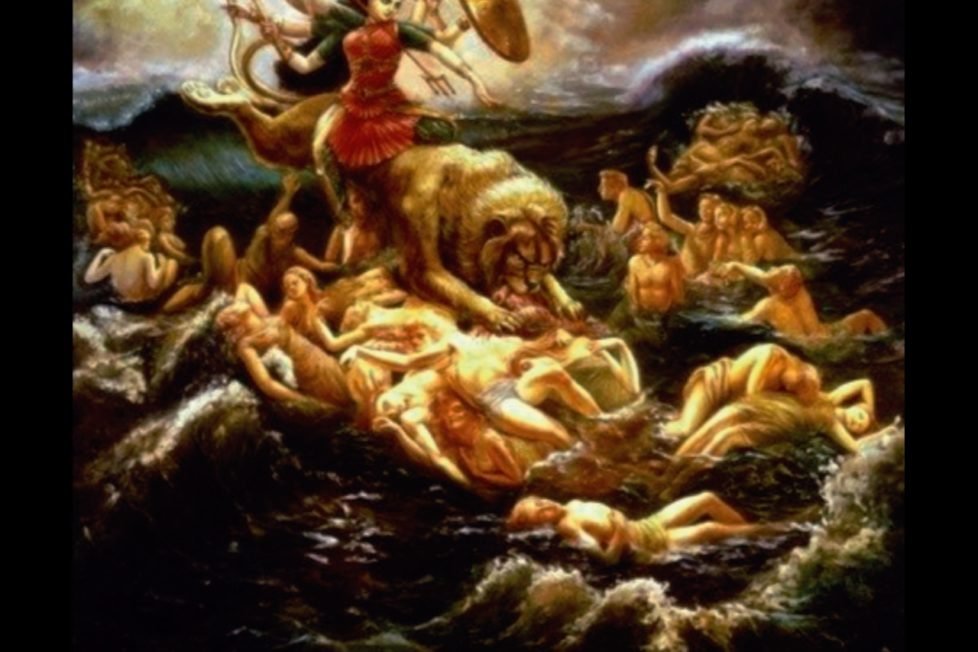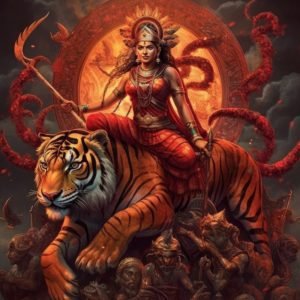Durga Saptashati – Devi Mahatmya – Chandi Path


Durga Saptashati, also known as Devi Mahatmya or Chandi Path, is a sacred Hindu scripture dedicated to the Goddess Durga. It is a part of the Markandeya Purana, one of the eighteen major Puranas in Hinduism. The Durga Saptashati comprises of 13 chapters that recounts the Devi’s valor through 700 verses (hence the name “Saptashati,” meaning seven hundred) divided into thirteen chapters or sections called “Adhyayas”. The procedure for reciting Durga Saptashati can be done either through Trayangam or Navangam, and is traditionally recited during Navratri.
Reading Durga Saptashati is believed to bring numerous benefits such as manifestation of Devi’s presence, removal of troubles and calamities, protection from enemies and planetary influences, and bestowal of wealth, grains, and children.
The Durga Saptashati, also known as the Devi Mahatmya or Chandi, is a compilation of stories about the battles of the Goddess Durga against demons who disturb the universe. Tales of the Devi’s different avatars defeating and killing demons are covered in the book.

The text is traditionally recited in two ways, either through the Trayangam or Navangam procedures. The Durga Saptashati is also recited during Navratri, with each day dedicated to a specific chapter. Benefits of reciting the text include the manifestation of Devi’s presence, protection from calamities and enemies, and bestowal of wealth and children. The tales of Devi symbolize the power of good over evil.
The scripture narrates the story of the battle between the Goddess Durga and the buffalo demon Mahishasura, who represents ego, ignorance, and negativity. The text describes how Durga manifests her various forms, such as Kali, Lakshmi, and Saraswati, to defeat the demons and restore balance and harmony in the universe. Each form of the goddess symbolizes different aspects of divine power and represents the triumph of good over evil.
The Durga Saptashati is highly revered and is often chanted or recited during Navaratri, a nine-night festival dedicated to the worship of Goddess Durga. It is believed that reciting or listening to the verses of Durga Saptashati with devotion can invoke the blessings of the goddess, grant protection, and bestow spiritual and material benefits upon the devotees.
The scripture is written in Sanskrit and is available in various translations and commentaries in different languages. It is considered a significant text for those who worship the divine feminine aspect and seek the blessings and guidance of Goddess Durga.
Here is a brief overview of the chapters in Durga Saptashati:
Here is a recitation of the first verse from each chapter:
(Please note that this is just a selection of the first verse from each chapter, and the complete recitation of the Durga Saptashati would involve chanting all 700 verses.)
DISCLAIMER: The author is solely responsible for the views expressed in this article. The author carries the responsibility for citing and/or licensing of images utilized within the text.
